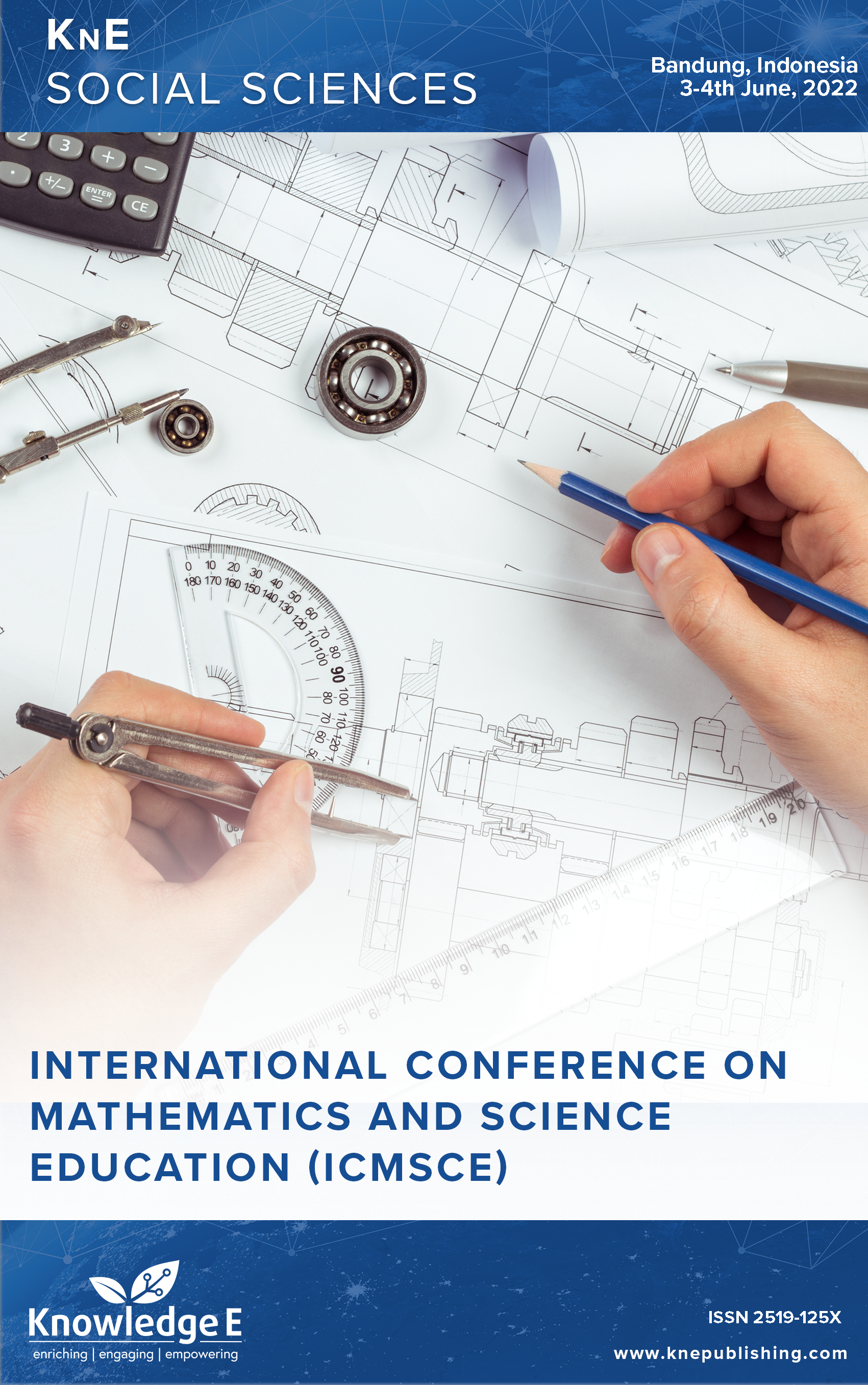Needs Assessment for the Development of Learning Models Based on Mathematical Problem Posing to Improve Critical Thinking Skills
DOI:
https://doi.org/10.18502/kss.v9i13.15966Abstract
Needs assessment is used as a base or a foundation in designing learning models based on mathematical problem posing. This research aims to identify mathematics learning that occurs and should occur. Needs assessment is carried out by literature study and field study. The participants in this study were junior high school mathematics teachers in Palu City. Of the 25 mathematics teachers who sent the mathematics learning questionnaire results, it was found that 65% of the teachers rarely applied the problem-posing task, and 35% never gave the assignment of proposing mathematics problems. The information obtained from the interviews with 4 mathematics teachers regarding problem posing was that the students understanding about the concept. The teacher argues that if students are given the task of problem posing, they would only copy in the book. They construct problems from the textbook and replace the numbers. The task of posing a problem is given when the math teacher is unable to attend. The task of constructing problem was a punishment for students for not working on the questions. The conclusion from this study results is that the teacher rarely gives the task of problem posing. There are misconceptions about the task of mathematical problem posing.
Keywords: critical thinking skills, learning models, mathematical problem posing, needs assessment
References
Almeida LS, Franco AH. “Critical thinking : its relevance for education in a shifting society.,” Revista de Psicologia. vol. 29, no. 1, p. 2011.
Aizikovitsh-Udi E, Cheng D. Developing critical thinking skills from dispositions to abilities: mathematics education from early childhood to high school. Creat Educ. 2015;06(4):455–62. DOI: https://doi.org/10.4236/ce.2015.64045
Changwong K, Sukkamart A, Sisan B. Critical thinking skill development: analysis of a new learning management model for Thai high schools. J Int Stud. 2018;11(2):37–48. DOI: https://doi.org/10.14254/2071-8330.2018/11-2/3
Lismayani I, Mahanal S, Sulawesi KS. The correlation of critical thinking skill and science problem-solving ability of junior high school students. Jurnal Pendidikan Sains. 2017;5(3):96–101.
Snyder LG, Snyder MJ. Teaching critical thinking and problem solving skills. Delta Pi Epsilon J. 2008;1(2):90–100.
Indrawatiningsih N, Purwanto AR. As’Ari, Dwiyana, Sudirman, and R. Rahardi, “The ability of high school students’ critical thinking in solving trigonometric problems,” IOP Conference Series: Earth and Environmental Science. vol. 243, no. 1, p. 2019. DOI: https://doi.org/10.1088/1755-1315/243/1/012050
Larsson K. Understanding and teaching critical thinking a new approach. Int J Educ Res. 2017;84:32–42. DOI: https://doi.org/10.1016/j.ijer.2017.05.004
Karakoc M. The significance of critical thinking ability in terms of education. Int J Humanit Soc Sci. 2016;6(7):81–4.
Persky AM, Medina MS, Castleberry AN. Developing critical thinking skills in pharmacy students. Am J Pharm Educ. 2019 Mar;83(2):7033. DOI: https://doi.org/10.5688/ajpe7033
Elwan RA. “Mathematics problem posing skills in supporting problem solving skills of prospective teachers.,” The 40th Conference of the International Group for the Psychology of Mathematics Education. vol. 2, no. August 2016, p. 2016.
Zuya H. The benefits of problem posing in the learning of mathematics: a systematic review. Int J Adv Res (Indore). 2017;5(3):853–60. DOI: https://doi.org/10.21474/IJAR01/3581
Singer FM, Ellerton N, Cai J. Problem posing research in mathematics education: new questions and directions. Educ Stud Math. 2013;83(1):1–7. DOI: https://doi.org/10.1007/s10649-013-9478-2
Ayllón MF, Gómez IA, Ballesta-Claver J. Pensamiento matemático y creatividad a través de la invención y resolución de problemas matemáticos. Propósitos y Representaciones. 2016;4(1):169–93. DOI: https://doi.org/10.20511/pyr2016.v4n1.89
Puspitasari AD, Suratno, Yushardi. “Analysis the development of sprider learning models to improve student’s critical thinking skills in natural science learning junior high school.” Journal of Physics: Conference Series. vol. 1832, no. 1, p. 2021. DOI: https://doi.org/10.1088/1742-6596/1832/1/012026
Umamah N. Marjono, Sumardi, Ma’Rifatullah R. “Need assessment and performance analysis on innovative, adaptive, and responsive curriculum development geared to life skills.” IOP Conference Series: Earth and Environmental Science. vol. 485, no. 1, p. 2020. DOI: https://doi.org/10.1088/1755-1315/485/1/012084
Nugraha ST, Suwandi S, Nurkamto J, Saddhono K. “The importance of needs assessment for the implementation of e-learning in a language program.” The 1st International Seminar on Language, Literature and Education, KnE Social Sciences. p. 2018. https://doi.org/10.18502/kss.v3i9.2686. DOI: https://doi.org/10.18502/kss.v3i9.2686
Panke S. “Creative needs assessment in instructional design: selected examples.,” Proceedings of EdMedia. no. January, p. 2016.
Joyce B, Weil M. “Conceptual complexity, teaching style and models of teaching.,” ERIC. p. 1972.
Şengül S, Katranci Y. The analysis of the problems posed by prospective mathematics teachers about ‘ratio and proportion’ subject. Procedia Soc Behav Sci. 2015;174:1364–70. DOI: https://doi.org/10.1016/j.sbspro.2015.01.760
Kar T, Özdemir E, Ipek AS, Albayrak M. The relation between the problem posing and problem solving skills of prospective elementary mathematics teachers. Procedia Soc Behav Sci. 2010;2(2):1577–83. DOI: https://doi.org/10.1016/j.sbspro.2010.03.239
Silver EA. On mathematical problem posing. For Learn Math. 1994;14(1):19–28.
Stoyanova E. “Problem posing in mathematics classrooms.,” Research in mathematics education: A contemporary perspective. pp. 164–185, 1998.
Arikan EE, Unal H, Ozdemir AS. Comperative analysis of problem posing ability between the anatolian high school students and the public high school students located in bagcilar district of istanbul. Procedia Soc Behav Sci. 2012;46:926–30. DOI: https://doi.org/10.1016/j.sbspro.2012.05.225
Christou C, Mousoulides N, Pittalis M, Pitta-Pantazi D, Sriraman B. “An empirical taxonomy of problem posing processes.,” ZDM - International Journal on Mathematics Education. vol. 37, no. 3, pp. 149–158, 2005. https://doi.org/10.1007/s11858-005- 0004-6. DOI: https://doi.org/10.1007/s11858-005-0004-6
Serin MK. Analysis of the problems posed by pre-service primary school teachers in terms of type, cognitive structure and content knowledge. Int J Educ Method. 2019;5(4):577–90. [26] Sanders S. Critical and creative thinkers in mathematics classrooms. Journal of Student Engagement: Education Matters. 2016;6(1):19–27. DOI: https://doi.org/10.12973/ijem.5.4.577

